Preliminary joint research in Kemena/Tatau riverine area, Sarawak, Malaysia [Noboru Ishikawa / Ryoji Soda]
Preliminary joint research in Kemena/Tatau riverine area, Sarawak, Malaysia
Noboru Ishikawa (CSEAS, Kyoto University) / Ryoji Soda (Osaka University)
It is easy to claim that this project integrates the humanities and science. However, the phrases “academic integration” or “cross-disciplinary field study” are used too often and now they have become somewhat clichéd. With this in mind, we planned our researches with much discussion. But soon it became clear that deskbound discussions were leading us nowhere. What should we do? So, for better or worse, we decided to hit the road. As members of this project, we ate and drank together; bathed together in rivers keeping our eyes open for crocodiles, and were packed together into a little boat watching the ever-changing landscape while being baked by the sun. At a longhouse, we listened actively and took notes while other members conducted interviews with local residents. We believe it is worth a try to transcend our specialties in order to share things we found interesting. And we do it as often as possible while traveling together. From the beginning of this project, we planned to gather and conduct joint research at least once a year. We conducted our preliminary research in the riverine of northern Sarawak, Bintulu area from August 15 to 25 in 2010. Our group, including participants other than the project members, consisted of 15 people that went on the excursion. The following is the report of the trip.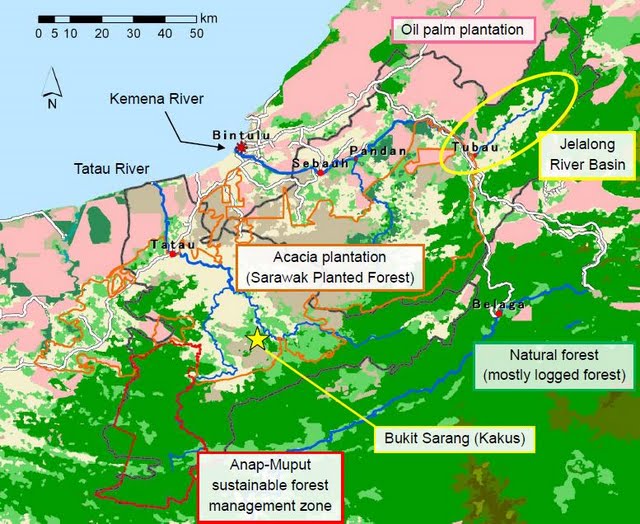
Aug. 15-18 Kemena/Jelalong N. Ishikawa, H. Samejima, M. Fujita, N. Tokuchi, N. Badenoch, Y. Sadamichi, K. Sakuma, K. Nagaoka (all from Kyoto Univ.), M. Uchibori (The Open Univ. of Japan), K. Okuno (J. F. Overlin Univ.), R. Soda (Osaka City Univ.), S. Otake (Moi), T. Watakabe (Univ. of the Ryukyus), S. Logie (Forest Dept. Sarawak) http://www.youtube.com/watch?v=cnRpuP_hLow

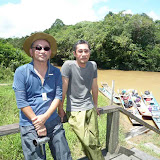 Aug. 19-21 Anap-Muput logging area
N. Ishikawa, H. Samejima, M. Fujita, Y. Sadamichi, M. Uchibori, K. Okuno, R. Soda, S. Otake, J. Hon (Kyoto Univ.), T. Ichikawa (Rikkyo Univ.)
Aug. 23-25 Kakus/Bukit Sarang
N. Ishikawa, H. Samejima, M. Fujita, Y. Sadamichi, K. Sakuma, J. Hon, S. Otake, T. Ichikawa
At Kemena/Jelalong, the first night we stayed in the longhouse of Penans mixed with Ibans. The following night we stayed in Iban longhouse.
http://www.youtube.com/watch?v=GRaguZKscc0
Aug. 19-21 Anap-Muput logging area
N. Ishikawa, H. Samejima, M. Fujita, Y. Sadamichi, M. Uchibori, K. Okuno, R. Soda, S. Otake, J. Hon (Kyoto Univ.), T. Ichikawa (Rikkyo Univ.)
Aug. 23-25 Kakus/Bukit Sarang
N. Ishikawa, H. Samejima, M. Fujita, Y. Sadamichi, K. Sakuma, J. Hon, S. Otake, T. Ichikawa
At Kemena/Jelalong, the first night we stayed in the longhouse of Penans mixed with Ibans. The following night we stayed in Iban longhouse.
http://www.youtube.com/watch?v=GRaguZKscc0
http://www.youtube.com/watch?v=AFl1b72WHjs
On the third day, we stayed in the bazaar at Tubau. Our objective was to take a journey together and to share the sentiments and the atmosphere of our study region. On the return to Bintulu, we split into several groups according to each member’s research interests. Members studying water quality or fluvial landscape took a boat while members studying vegetation or birds’ distribution drove to Bintulu. At Kemena/Jelalong, we observed the multi-ethnic environment (composite ethnoscape) of Iban, Penan, Kayan, ethnic Chinese, Vaie Segan and other ethnic groups. We witnessed heterogeneous landscapes with various vegetations, comprised of swidden land, fallowed secondary forest, oil palm plantations, pepper fields and logged forest. In Anap-Muput, we visited logging sites and the offices of logging camp sites, the longhouses near logging areas as well as Bukit Kana Field Station under the guidance of Zedtee, the logging company, which conducts low impact logging operation in this area. We stayed overnight in a longhouse and Zedtee’s Field Station. During this stay we had a chance to see the process of the logging operation. At the longhouse we had the opportunity to ask the residents about their views on the logging operation in this area. In the Zedtee Field Station we held a seminar on low impact logging operation.
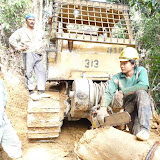
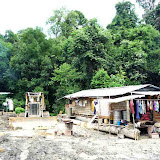 Our primary objective in Kakus was to visit a cave in Bukit Sarang to observe swiftlets’ nesting and to interview the residents of a longhouse who hold ownership of the cave’s birds’ nests. On this trip, we received help from the Sarawak Planted Forest and Grand Perfect which conduct acacia planting operations in this area. With their help we stayed in Bukit Sarang Field Station and from there we reached the cave and conducted our research. The path to the cave was quite taxing as the entire area was flooded and the water flowed into the cave as well. We managed ourselves to walk through the cave and climb to the peak of Bukit Sarang. On the final day, we were guided to the acacia plantation by the staff of Sarawak Planted Forest and saw a large-scale acacia nursery as well as attended a lecture on the tree planting program in this area.
Our primary objective in Kakus was to visit a cave in Bukit Sarang to observe swiftlets’ nesting and to interview the residents of a longhouse who hold ownership of the cave’s birds’ nests. On this trip, we received help from the Sarawak Planted Forest and Grand Perfect which conduct acacia planting operations in this area. With their help we stayed in Bukit Sarang Field Station and from there we reached the cave and conducted our research. The path to the cave was quite taxing as the entire area was flooded and the water flowed into the cave as well. We managed ourselves to walk through the cave and climb to the peak of Bukit Sarang. On the final day, we were guided to the acacia plantation by the staff of Sarawak Planted Forest and saw a large-scale acacia nursery as well as attended a lecture on the tree planting program in this area.



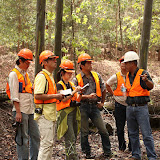 We found these trips to be quite significant. We had the rare opportunity to travel with other researchers having different fields of study or interest. We witnessed the local situation together and shared our thoughts and opinions while freely discussing what we could do for this project. We would like to devise a detailed plan for the next research trip to share each member’s experience in the field and to facilitate our cross-sectoral communication. We hope our project provides us with an opportunity to send our message from the field of interdisciplinary study.
We found these trips to be quite significant. We had the rare opportunity to travel with other researchers having different fields of study or interest. We witnessed the local situation together and shared our thoughts and opinions while freely discussing what we could do for this project. We would like to devise a detailed plan for the next research trip to share each member’s experience in the field and to facilitate our cross-sectoral communication. We hope our project provides us with an opportunity to send our message from the field of interdisciplinary study.

